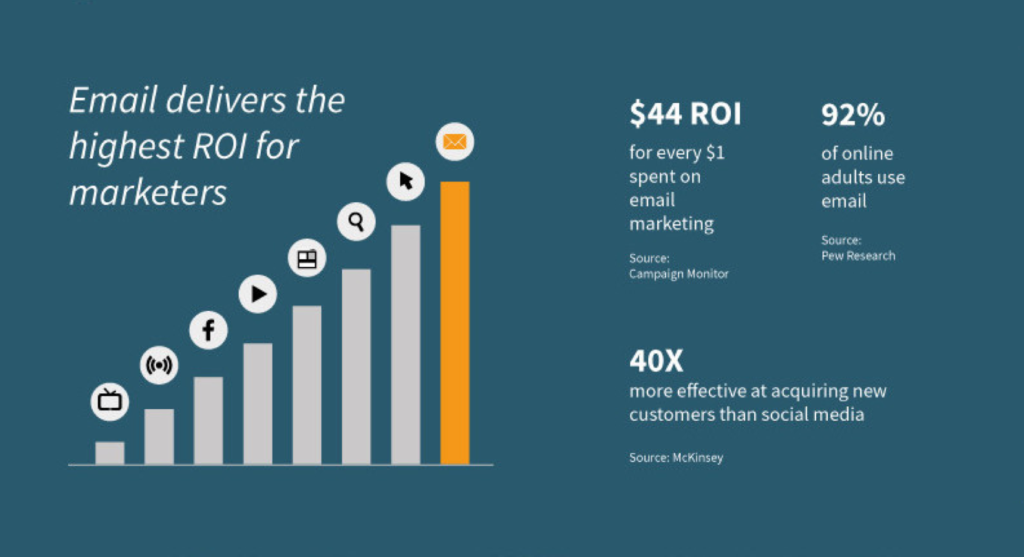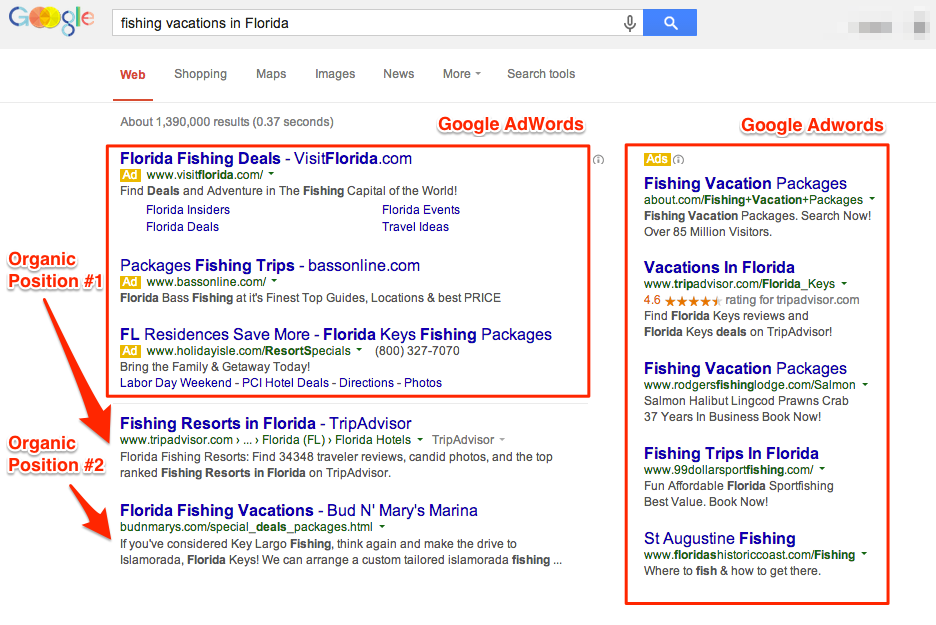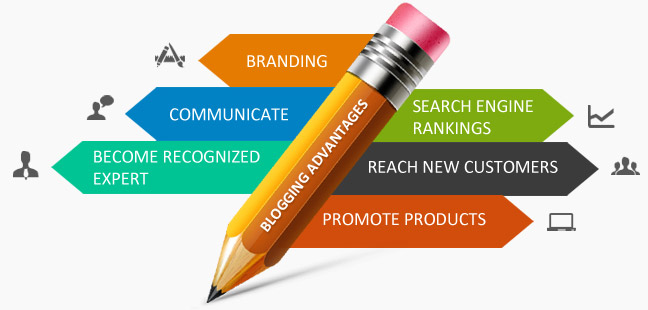
In the competitive field of plastic surgery, a well-crafted marketing plan is vital for attracting patients and maintaining a thriving practice. This comprehensive guide delves into the key elements of an effective plastic surgery marketing plan, including inbound marketing, email marketing, search engine marketing (SEM), content marketing, and the importance of audiovisual content. By understanding and implementing these components, you can establish and maintain a successful plastic surgery marketing strategy.
1. Inbound Marketing: Attracting Patients Actively Seeking Your Services
Inbound marketing is a key component of any plastic surgeon’s marketing plan. It focuses on actively reaching out to prospective patients who are already seeking cosmetic surgery services. Once you’ve developed your digital marketing strategy, you can use a variety of tactics to attract these potential clients. Social media platforms such as Facebook, Twitter, and Instagram provide an excellent opportunity for engaging with people looking for plastic surgeons in their area. Posting helpful blog posts and positive reviews about your practice will help build trust and encourage more people to contact you. You can also use social media ads targeting specific audiences that are likely to be interested in your services.
Tracking your online presence
Another important part of any digital presence strategy is tracking conversion rates from your website or other online sources. Having the right analytics tools in place allows you to measure how effective your plastic surgeon marketing efforts are, giving you insights into what works best and what needs improvement. By making sure visitors have a positive experience on your website, optimizing content for SEO purposes, and utilizing other digital channels like email campaigns or PPC advertising, you can increase the conversion rate from leads to clients for your practice with successful plastic surgery marketing strategies.
2. Email Marketing: Nurturing Patient Relationships
Email marketing is a powerful tool for plastic surgery clinics looking to build a strong patient base. It allows you to target ideal patients with tailored digital marketing campaigns and efforts while providing a direct line of communication to your patients. Email newsletters can be used to keep your customers up-to-date on the latest news and developments in plastic surgery, as well as any new medical procedures or services that you offer. You can also use email campaigns to feature positive patient reviews, encouraging more people to book appointments with your practice.

By leveraging the power of email marketing, plastic surgery clinics can develop relationships with loyal customers that will last for years here is how:
- Segmentation: Divide your email list into segments based on factors like patient preferences, procedure interests, and demographics. Segmenting your list allows you to send highly relevant and personalized content to each group.
- Personalization: Address your patients by their names, and tailor your email content to their specific needs and interests. This personal touch enhances engagement and fosters trust.
- Educational Content: Use your emails to provide valuable information, whether it’s about new procedures, recovery tips, or patient stories. Educational content positions you as an expert and helps keep your patients informed.
- Promotions and Special Offers: Keep your patients engaged by offering exclusive promotions or special discounts via email, ensuring these offers are relevant and valuable.
- Regular Newsletters: Sending regular newsletters keeps your practice top of mind. Include updates, articles, success stories, and tips related to plastic surgery in your newsletters.
Email marketing helps you stay connected with your patients, nurturing relationships and ensuring your practice remains their preferred choice for future procedures or treatments. It has the highest conversion rate percentage of any digital marketing strategy or technique. The secret is on the list. Make sure you are constantly increasing your list through creative methods, obtaining the permission of those who truly want to know new information about your plastic surgery practice.

Conversion rate is a important metric to keep track off and email marketing can boost it greatly.
3. Search Engine Marketing (SEM): Dominating the Online Search Space
Search Engine Marketing (SEM) is a powerful digital marketing tool for plastic surgery clinics looking to dominate the online search space. SEM utilizes targeted Google ads and keywords to increase website visibility and drive more organic traffic. With well-crafted ad campaigns, you can reach potential patients who are actively searching for plastic surgery procedures such as breast augmentation or rhinoplasty. Additionally, by optimizing your website for search engines, you can ensure that your content appears higher in the results pages and maximize your clinic’s exposure. When used correctly, SEM can help you acquire new customers while increasing patient loyalty and ensuring that your practice stays top of mind. Here is how it’s done properly:
- Pay-Per-Click (PPC) Advertising: Bidding on keywords related to your plastic surgery services enables your Google ads to appear when individuals search for those keywords. Although PPC provides a more immediate way to generate leads, it often comes at a cost.
- Search Engine Optimization (SEO): This long-term strategy optimizes your website for organic search results. It involves refining your website’s structure, content, and technical aspects to rank higher for relevant keywords, driving organic traffic.

Mastering SEM is essential for improving your online visibility and attracting patients who are actively seeking your services.
4. Content Marketing: Establishing Your Authority
Content marketing plays a key role in helping plastic surgery practices establish authority within the medical industry. By creating high-quality content such as blog posts, videos, and eBooks about surgical procedures and other related topics, you can boost your search rankings locally and improve your social media presence. Additionally, by partnering with SEO services to create a wide range of content that is tailored to the needs of your target audience, you can build trust with potential patients and demonstrate your expertise in the field.

This type of content helps to establish your practice as an authority figure in the medical industry and encourages potential patients to book appointments. Take a note on this:
- Power Pages: Comprehensive, in-depth resources covering specific plastic surgery topics, aiming to provide valuable information to potential patients.
- Guest Posts: Writing content for other websites within the medical field can help you build backlinks and increase your site’s visibility.
Ensure that your content is well-structured, informative, and engaging, using elements like large headlines, concise paragraphs, bullet points, images, and diagrams to enhance readability and encourage exploration.
5. Content Marketing for Peers: Building Backlinks and Industry Recognition
Content marketing extends beyond attracting patients and can help you establish your authority within the medical community:
- Create Industry-Relevant Content: Develop content that is intellectually stimulating, scientifically sound, and relevant to authoritative figures within the medical field, such as research findings or clinical insights.
- Outreach and Digital PR: Identify professionals, organizations, or authoritative figures who may find your content valuable. Reach out to them with your content, aiming for recognition and potential backlinks.
- Guest Posts for Peers: In addition to creating content for your own website, consider writing guest posts for other medical or plastic surgery-related websites to expand your outreach and acquire authoritative backlinks.
Positioning yourself as an authoritative voice within the industry can enhance your online visibility and industry recognition.
How to Leverage Content Effectively:
Understand Your Audience
Begin by deeply understanding the needs, concerns, and questions of your target audience. Are they looking for cosmetic enhancements like rhinoplasty or non-invasive procedures such as Botox? Each demographic will have unique concerns and informational needs. Tailoring your content to answer these specific questions not only improves your SEO rankings but also establishes your practice as a trustworthy and knowledgeable authority in the field.
Create a Content Calendar
Consistency is key in content marketing. Develop a content calendar that outlines when and what you will publish, whether it’s blog posts, videos, or patient testimonials. This ensures a steady stream of content that keeps your audience engaged and helps maintain your SEO rankings.
Diversify Your Content
While blog posts are a staple of content marketing, don’t overlook the power of video, infographics, and interactive tools like quizzes or virtual consultations. Video content, especially, can significantly enhance patient engagement, offering a dynamic way to showcase before-and-after results, explain procedures, and introduce your practice’s staff and ethos. Remember, the goal is to educate, inform, and reassure your potential patients.
Leverage Patient Stories
Nothing speaks louder than the success stories of your patients. With their permission, share these stories on your website and social media channels. Before-and-after galleries, patient video testimonials, and detailed case studies can significantly impact prospective patients, offering them real-world evidence of your expertise and the quality of care they can expect.
Focus on SEO
Ensure your content is optimized for search engines. Use relevant keywords naturally, improve your website’s on-page SEO, and regularly update your content to keep it fresh and engaging. Local SEO tactics, such as optimizing for local search terms and creating location-specific pages, can also drive more targeted traffic to your site.
Measure and Adapt
Finally, use analytics tools to track the performance of your content. Which posts are getting the most views or engagement? What keywords are driving traffic to your site? Use this data to refine your content strategy over time, focusing on what works best for your audience and practice.
6. Audiovisual Content: The Last Piece in the Content Marketing Puzzle
Audiovisual content is an effective way to captivate and educate prospective clients about cosmetic procedures. Utilizing various social platforms, plastic surgery clinics can create a steady stream of engaging and educational videos, infographics, and other visual assets to attract new patients. Additionally, these audiovisual resources can be shared in social media posts to interest and inform potential customers about your services. With the right audiovisual content, you can give your practice the edge it needs to stand out from the competition and establish yourself as an authority in plastic surgery:
- Before and After Videos: These videos showcase real patient transformations, featuring interviews with patients who express their excitement about their upcoming procedures. They provide an insider’s look into the plastic surgery journey, helping potential patients visualize their own transformations.
- Surgery Videos: Offering in-depth insights into various procedures, surgery videos function like documentaries, providing transparency and easing patient concerns.
- Explainer Videos: Educational in nature, these videos feature an actual plastic surgeon explaining general questions and topics related to plastic surgery, addressing common inquiries.
Video content enhances your website’s appeal, making it more engaging and interactive. It allows potential patients to visualize patient transformations and understand procedures, ultimately building trust with your audience.
7. Online Reputation Management: The Keystone of Plastic Surgery Marketing
In the digital age, your online reputation is your most valuable asset. A stellar reputation not only enhances your credibility but also instills trust in potential patients. Here’s how to proactively manage your online presence:
Monitor and Respond to Reviews: Regularly check both positive and negative reviews on platforms like Google Business Profile, Yelp, and Healthgrades. Respond promptly to both positive and negative feedback, demonstrating your commitment to patient satisfaction.
Encourage Satisfied Patients to Leave Reviews: Implement a system to encourage happy patients to share their experiences online. This could be as simple as sending follow-up emails thanking them for their trust and inviting them to review their experience.
8. Advanced SEO Tactics for Plastic Surgeons
SEO is not just about keywords; it’s about connecting with potential patients at the moment they’re seeking your services. Elevate your SEO strategy with these advanced tactics:
- Local SEO Optimization: Ensure your cosmetic surgery practice appears in local search results by optimizing your Google Business Profile listing and incorporating local keywords into your website’s content.
- Content Marketing: Create valuable content that addresses common questions and concerns related to plastic surgery. This could include detailed blog posts, infographics, and videos that educate and engage potential patients.
- Technical SEO: Improve your website’s technical aspects, such as mobile responsiveness, page load speed, and structured data, to enhance user experience and search engine rankings.
9. Leveraging Social Media Platforms
Social media is a powerful tool for building relationships with potential and current patients. To maximize its potential, consider the following strategies:
- Engaging Content Creation: Share before-and-after photos, patient testimonials, and behind-the-scenes looks at your practice to engage and inspire your audience.
- Interactive Features: Utilize polls, Q&A sessions, and live videos to interact directly with your followers, answering their questions and giving them a glimpse into your practice’s personality.
- Targeted Advertising: Use social media platforms’ advertising capabilities to reach potential patients based on demographics, interests, and behaviors. Tailored ads can drive awareness and conversions more effectively than general advertising.
10. Influencer Partnerships
Leverage the power of social proof by partnering with influencers who resonate with your target audience. Influencer marketing can significantly amplify your cosmetic surgery practice’s reach and credibility.
- Identify Relevant Influencers: Look for influencers who align with your practice’s values and have an engaged audience that matches your target demographic.
- Collaborative Content: Work with influencers to create authentic content that showcases your services, such as transformation and patient success stories or live Q&A sessions about procedures.Ensure transparency by clearly disclosing partnerships and adhering to ethical marketing practices, particularly when showcasing results.
- Ethical Considerations: Ensure transparency by clearly disclosing partnerships and adhering to ethical marketing practices, particularly when showcasing results.
11. Advanced Analytics for Patient Acquisition
Utilize data analytics to refine your marketing strategies and optimize patient acquisition efforts. Data-driven insights can reveal valuable trends and behaviors.
- Patient Journey Analysis: Use analytics tools to track the patient’s journey from initial interest to booking a consultation. Identify key touchpoints and optimize them for better conversion rates.
- ROI Tracking: Implement tools to track the return on investment (ROI) of different marketing channels. Focus your efforts on the most effective channels to maximize your marketing budget.
- A/B Testing: Regularly test different aspects of your marketing campaigns, from ad copy to landing pages, to determine what resonates best with your audience and improve your strategies accordingly.
In Conclusion: A Comprehensive Approach to Plastic Surgery Marketing
To create an effective plastic surgery marketing strategy, adopt a holistic approach that integrates inbound marketing, email marketing, SEM, content marketing, and audiovisual content. Building a robust online presence is an ongoing effort that demands dedication to providing valuable content. By implementing these strategies, your plastic surgery practice can efficiently reach and engage your target audience, leading to increased patient inquiries, consultations, and conversions, ultimately allowing your practice to expand and transform lives.
Frequently Asked Questions About Plastic Surgery Marketing
How often should I update my practice’s website content for effective marketing?
Regular updates are crucial for keeping your website relevant and engaging. Aim to update your blog or news section at least once a month with fresh content, such as industry news, procedure updates, or patient testimonials. Review and refresh your core service pages every 6 to 12 months to ensure the information remains accurate and reflects any new techniques or services you offer.
What’s the most effective way to increase my practice’s visibility on social media?
Consistency is key. Post regularly, at least 3-4 times a week, and engage with your audience by responding to comments and messages promptly. Use a mix of content types, including educational posts, behind-the-scenes looks at your practice, and patient success stories (with their permission). Utilizing hashtags relevant to your services and location can also help increase visibility.
Can online reviews really impact my plastic surgery practice? How should I manage them?
Absolutely. Positive online reviews can significantly enhance your practice’s reputation and attract new patients. Encourage satisfied patients to leave reviews on platforms like Google My Business and Healthgrades. Address negative reviews professionally and promptly, offering to resolve any issues offline. This shows prospective patients that you value feedback and are committed to patient satisfaction.
Is email marketing still effective for plastic surgery practices?
Yes, email marketing remains a powerful tool for engaging both prospective and current patients. Use segmented email lists to send targeted messages, such as educational content for those considering a procedure and follow-up care tips for post-operative patients. Personalization and automation can enhance the effectiveness of your email campaigns, making them more relevant and timely.
How can I measure the success of my marketing efforts?
Set clear, measurable goals for each marketing channel you use, such as increasing website traffic, boosting social media engagement, or generating more leads. Use tools like Google Analytics for your website and platform-specific analytics for social media to track progress. Regularly review these metrics and adjust your strategies as needed to improve performance